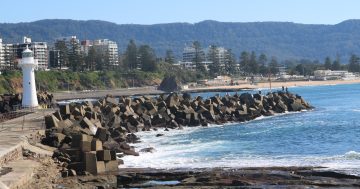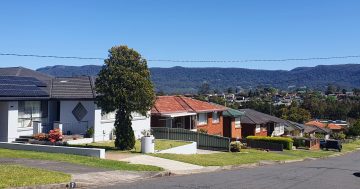
Lake Illawarra was the highest performing suburb in the region this quarter. Photo: Jen White.
Illawarra property is “bucking the national trend” coming into the spring selling season, as momentum continues to leave the Australian housing market.
Nationally, housing values rose 1 per cent in the September quarter – the lowest rise in the national Home Value Index (HVI) over a rolling three-month period since March 2023 – and dwelling values increased a modest 0.4 per cent in the first month of spring.
In contrast, the Illawarra experienced a 2.1 per cent rise in values in the same period, defying even other regional housing markets, with the combined regionals index dropping to just 1 per cent in the September quarter.
“With double the growth of the national market, it seems the Illawarra is bucking the trend,” CoreLogic head of research Eliza Owen said.
“This growth trend has been fairly steady in the region, with that 2 per cent quarterly growth hovering around the market for the past 18 months.
“Consider that comparable NSW regional areas like the Southern Highlands and Shoalhaven are seeing a slowdown to 1 per cent for the quarter.”
Despite the contextually solid performance, Eliza said what the Illawarra was experiencing was a “more normalised” growth cycle.
In 2021 at the height of the pandemic, when regional lifestyle markets surged in popularity, the Illawarra saw home value growth rates in excess of 10 per cent.
“Not that it’s an affordable market, but it may be a more viable market compared to places like Sydney, where the median house value is $1.4 million,” she said.
Since ticking back into the million-dollar mark in September last year, house values across the Illawarra region have steadily increased to a median value of $1,064,000.
Over the past three months small pockets of the market experienced declines, the weakest performer being Mangerton where houses hit a median value of $1,081,000 (down 1 per cent over the past three months) followed by Wollongong where the median house value sits at $1,090,000 (also down 1 per cent over the quarter).
However, strong market increases were found in parts of the Kiama and Shellharbour regions. In Lake Illawarra values were still up 6.5 per cent for the quarter – the highest performing in the region.
“Broadly speaking across Australia, we’re in an economic environment where you’d expect there wouldn’t be as many buyers in the market right now – the high cost of living, lack of affordability and high interest rates all limit borrowing capacity,” Eliza said.
“We see therefore that demand is skewing to these more affordable pockets of the market, or areas that deliver the highest value.”

CoreLogic head of research Eliza Owen said the Illawarra had experienced fairly steady growth over the past year and a half. Photo: CoreLogic.
Regardless, CoreLogic reported strong levels of demand in the Illawarra, with sales volumes across the region sitting at 5500 across the past 12 months – up from 4500 the previous year.
“We will expect to see an increase in homes hitting the market, but not necessarily because of desperation to sell or mortgage stress,” she said. “It’s to meet the demand in markets that seem more robust than other parts of NSW,” Eliza said.
While the national rental index increased by just 0.1 per cent over the September quarter – a slowdown in rental growth that CoreLogic said was likely linked to the easing net overseas migration and rental affordability pressures – it did not signal rental relief in the Illawarra.
“There was an average rental value increase of 7 per cent in suburbs across the Illawarra over 12 months, which is pretty high,” she said.
“There’s no real sign of relief across the rental market, with values rising on a broad basis over the past 12 months. These range from a 2.5 per cent increase in house rents in the suburb of Figtree to an 11 per cent increase in house rents in Blackbutt. Gerringong is another one with a strong increase for house rates – up 11.2 per cent in the past 12 months.”
As for whether or not it was a seller’s market, Eliza said it depended on how recently you bought.
“Spring and summer tend to create favourable selling conditions, especially for a lifestyle region like the Illawarra, but if you want to sell to make a profit, it really depends on which point in the market cycle you bought,” she said.
“Anyone who has been in the market longer than four years would be sitting in a fairly strong equity position and would be able to reap a windfall in capital gains from a sale. But it’s still worth being conscious of your local market – consider how many other people are selling, and how long properties are sitting on the market and that will help you gauge if you can get a deal done quickly and achieve a competitive sale price.
“More recent buyers or those who bought at the peak back in May 2022 might need to hold out longer, potentially until we get a new cash rate.”

















